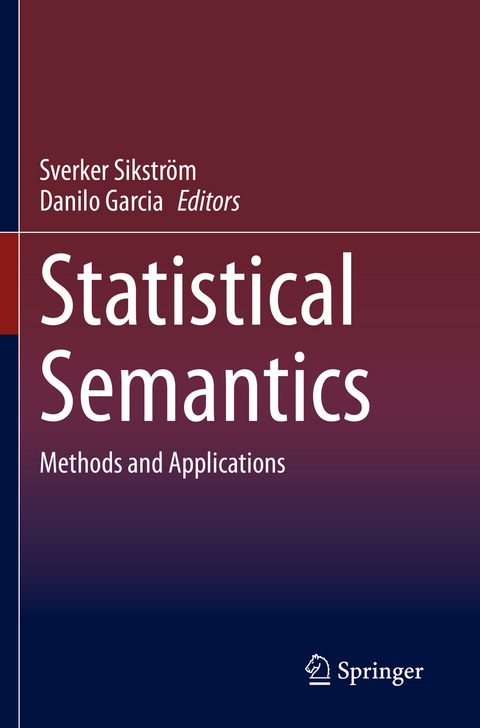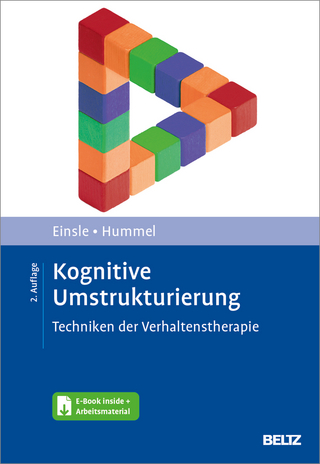
Statistical Semantics
Springer International Publishing (Verlag)
978-3-030-37252-1 (ISBN)
Sverker Sikstroem has the professorship of cognitive psychology, and the chair of the cognitive division, at Lund University. His earlier work included neural network models and experimental work of memory. His later work include models of meaning of texts, including method developments and application in various fields of behavioural sciences; such as social psychology, memory, positive psychology and clinical psychology. His most recent work is about diagnosing mental health with words analysed by artificial intelligence. Danilo Garcia, PhD is the Head of Research at the Blekinge Centre of Competence, which is the Region Blekinge's research and development unit. This center works on innovations in health and practice through interdisciplinary scientific research, person-centered methods, community projects, and the dissemination of knowledge in order to increase the quality of life of people in Sweden. He took his PhD in psychology in 2012 and is also an Associate Professor at the University of Gothenburg since 2015, a well-being coach, and one of the founders and leading Senior Researcher of the Network for Empowerment and Well-Being. He has over 300 publications including scientific articles, chapters, encyclopedia entries, and books. His research interests, besides quantitative semantics, well-being and personality, are free-will, the biopsychosocial model of health, the placebo effect, complex adaptive systems, organizational psychology, genetics, and psychometrics.
Part I. Methods.- Chapter 1. Introduction to Statistical Semantics; Ricardo Olmos.- Chapter 2. What is Meaning?; Johan Willander.- Chapter 3. Preparing Corpus for Semantic Representations; Christian Hardmeier.- Chapter 4. Creating Semantic Representations; Guillermo de Jorge Botana.- Chapter 5. Software for Creating and Analyzing Semantic Representations; Christian Hardmeier.- Chapter 6. Semantic Scales and Tests; Farhan Sawar, Danilo Garcia and Sverker Sikström.- Chapter 7. Predicting Numbers from Texts; Sverker Sikström.- Chapter 8. Replacing Likert-Scales with Semantic Questions.- Chapter 9. Clustering and Other Methods in Statistical Semantics; Rasmus Bååth and Sverker Sikström.- Part II. Applications.- Chapter 10. Neuroscience: Atypical Associations to Abstract Words in Broca's Aphasia; Mikael Roll, Frida Mårtensson, Sverker Sikström, Pia Apt, Rasmus Arnling-Bååth and Merle Horne.- Chapter 11. Cognitive Psychology; The Application of Statistical Semantics in Memory Research;Kristina Karlsson, Sverker Sikström and Johan Willander.- Chapter 12. Personality and Happiness; The Happy Life Story; Danilo Garcia and Sverker Sikström.- Chapter 13. Forensic Psychology: Studying Lying Behavior with Semantic Spaces; Farhan Sarwar and Sverker Sikström.- Chapter 14. Social Psychology: Evaluations of Social Groups with Statistical Semantics; Marie Gustafsson and Torun Lindholm.- Chapter 15. Linguistics: Application of Statistical Semantics to Predict Linguistic Maturity and Language Impairment in Children; Kristina Hansson, Birgitta Sahlen, Rasmus Bååth, Simone Löhndorf and Sverker Sikström.- Chapter 16. The Future of Statistical Semantics: Concluding Remarks and Suggestion for Future Research.
| Erscheinungsdatum | 10.06.2021 |
|---|---|
| Zusatzinfo | XVI, 262 p. 50 illus. |
| Verlagsort | Cham |
| Sprache | englisch |
| Maße | 155 x 235 mm |
| Gewicht | 433 g |
| Themenwelt | Geisteswissenschaften ► Psychologie ► Allgemeine Psychologie |
| Geisteswissenschaften ► Psychologie ► Verhaltenstherapie | |
| Geisteswissenschaften ► Sprach- / Literaturwissenschaft ► Sprachwissenschaft | |
| Sozialwissenschaften ► Soziologie ► Empirische Sozialforschung | |
| Schlagworte | Analyzing Semantic Representations • Applications of Statistical Semantics • Foundations of Statistical Semantics • Generating Semantic Representation • Global Experience of Happiness • Language Impairment in Children • Latent Semantic Analysis (LSA) • Neuroscience and Statistical Semantics • Positive Psychology Research • Predicting Linguistic Maturity • Quantitative Semantics and Statistical Semantics • Research on Language Development • Social Groups with Statistical Semantics • Statistical Semantics in Memory Research • Studying Lying Behavior |
| ISBN-10 | 3-030-37252-9 / 3030372529 |
| ISBN-13 | 978-3-030-37252-1 / 9783030372521 |
| Zustand | Neuware |
| Haben Sie eine Frage zum Produkt? |
aus dem Bereich


